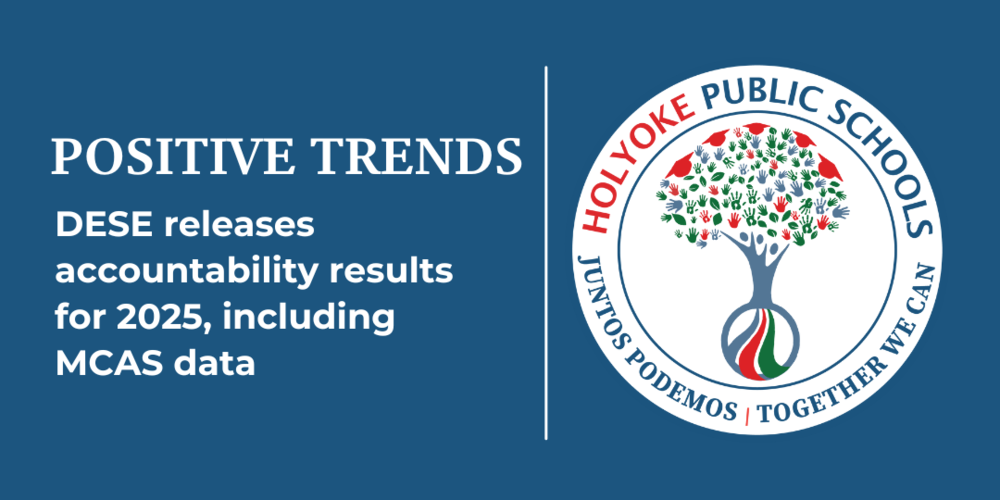The Massachusetts Department of Elementary and Secondary Education (DESE) released the accountability results for all schools and districts, which includes MCAS (Massachusetts Comprehensive Assessment System) results. In the next few weeks, official MCAS individual student reports will be delivered to the district and then sent to families.
“I am thrilled to share that the hard work of our students, educators, school staff, families, and leaders is resulting in substantive change,” said Interim Superintendent Anthony Soto in announcing the results on Monday, September 29. “Last year, when I shared our MCAS results, I challenged all of us: ‘What can you do to champion students’ success at school? We must work together to ensure students attend school on-time, ready to learn, everyday.’ You responded to this challenge. On behalf of our students, THANK YOU.”
HPS is seeing positive trends in the state’s accountability data, Mr. Soto said. The district met 51% of the overall progress towards improvement. Since the overall progress designation is a weighted average of the last two years, HPS made moderate progress towards targets overall. (See the Accountability Summary by school.) All but two schools met a higher percentage of their improvement targets than last year. HPS elementary and middle school students are making more progress towards improvement targets (71%) than any single year since the new accountability system went into effect in 2018.
The MCAS results reveal progress towards greater student proficiency and growth:
The percentage of students in grades 3-8 meeting and exceeding expectations increased by 3 points in English Language Arts (ELA) and 1 point in math.
In grades 3-8, the lowest performing student sub-group increased the average scaled score by 5 points in both ELA and math —which means the achievement floor is being raised.
The percentage of students who scored “not meeting expectations” has decreased—which means more students are approaching grade-level proficiency.
Other data points, too, demonstrated encouraging growth. For example, HPS met performance targets for:
Students making progress towards English language proficiency. The percent of students meeting their annual targets increased 1.7 points for non-high school and 2.1 points for high school.
A reduction in chronic absenteeism (which is when a student misses 10% or more days of school). The percent of students who are chronically absent decreased by 4.4 points for non-high school and decreased 1.9 points for high school.
Students graduating high school in 4 years. The 2.5 point increase to 76.6% is the highest graduation rate on record since the state began reporting cohort-based rates in 2006.
“Of course, we still have a lot more work to do to realize our mission that all Holyoke students develop the skills and access the opportunities to graduate high school prepared for life, career, and college. The data confirms areas where we know significant improvement is needed,” Mr Soto noted, including:
Achievement and growth of high school students
Achievement and growth of students with disabilities
“The lack of growth and proficiency in high school is troubling, and I am committed to working with our high school and district leaders, as well as our high school educators, to understand this issue and adjust our approach as needed,” Mr. Soto said. “While I’m encouraged that high school students who attend school regularly scored higher on MCAS than students with lower attendance rates, our high school chronic absenteeism rate is greater than 50%, so we must do more to get students to school and engage them in their learning. Because when they are at school, they are learning important skills and standards. I am hopeful that our strategic focus area Belonging and Well-being on will help lead to higher attendance and engagement.”
Another strategic focus area for HPS this year is High-Quality Lessons using Inclusive Practices, which should help address the persistent achievement gap for students with disabilities and students who are English Learners. “I am confident that when we are able to deliver instruction that meets the needs of all learners—in an environment that is highly supported and students feel valued—our students will continue to grow academically and socially.”
For more information on the accountability system and detailed information on individual school and districtwide results, visit the District and School Accountability page of the DESE website.

